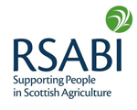The most common pests in grassland are slugs, leather jackets and frit fly. Slugs are a primary pest for many crops and their impact is affected by their number and activity. They can lay vast numbers of eggs if conditions are right, so care must be taken to not encourage their behaviour. They will grow and reproduce most when conditions are mild and moist so can be particularly problematic at sowing in the spring and autumn. They can be difficult to spot in the day as they prefer to avoid hot dry conditions so most of their activity will happen overnight. They like heavier soils with a high clay content and are far more prevalent in more open soils that encourage their movement.
Leather jackets are the larvae of crane flies. They will eat the roots and shoots on a wide range of crops, but they are potentially extremely damaging for a newly established grass ley. The crane fly will lay eggs in a pasture in July and August and anything following such a ley is at particular risk. Even if the turf is ploughed down the larvae will move to feeding on the newly established crop. A tell-tale sign would be flocks of crows feeding on the larvae on the newly sown crop. Damage would quickly become apparent with large bare areas across the field. With chemical control no longer an option the best method to avoid potential leather jacket issues is to break their life cycle. By extending the break between grass to grass in the field it removes the food source and will lead to a reduction in their numbers. This can be achieved by fallowing the field or looking at a non-grass alternative such as a forage brassica.
In all circumstances to minimise pest damage, attention to detail in establishment is crucial with a fine firm seed bed, adequate pH, and a fertile soil essential.




